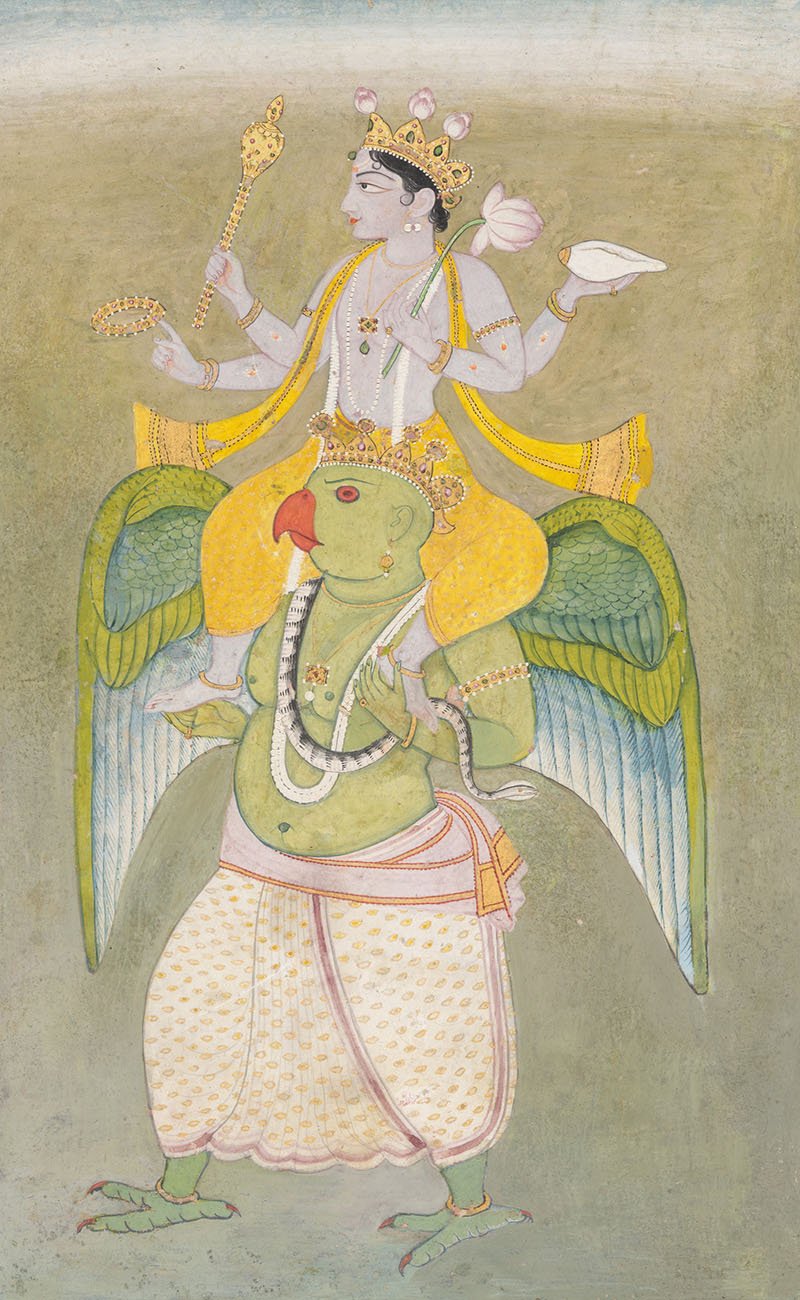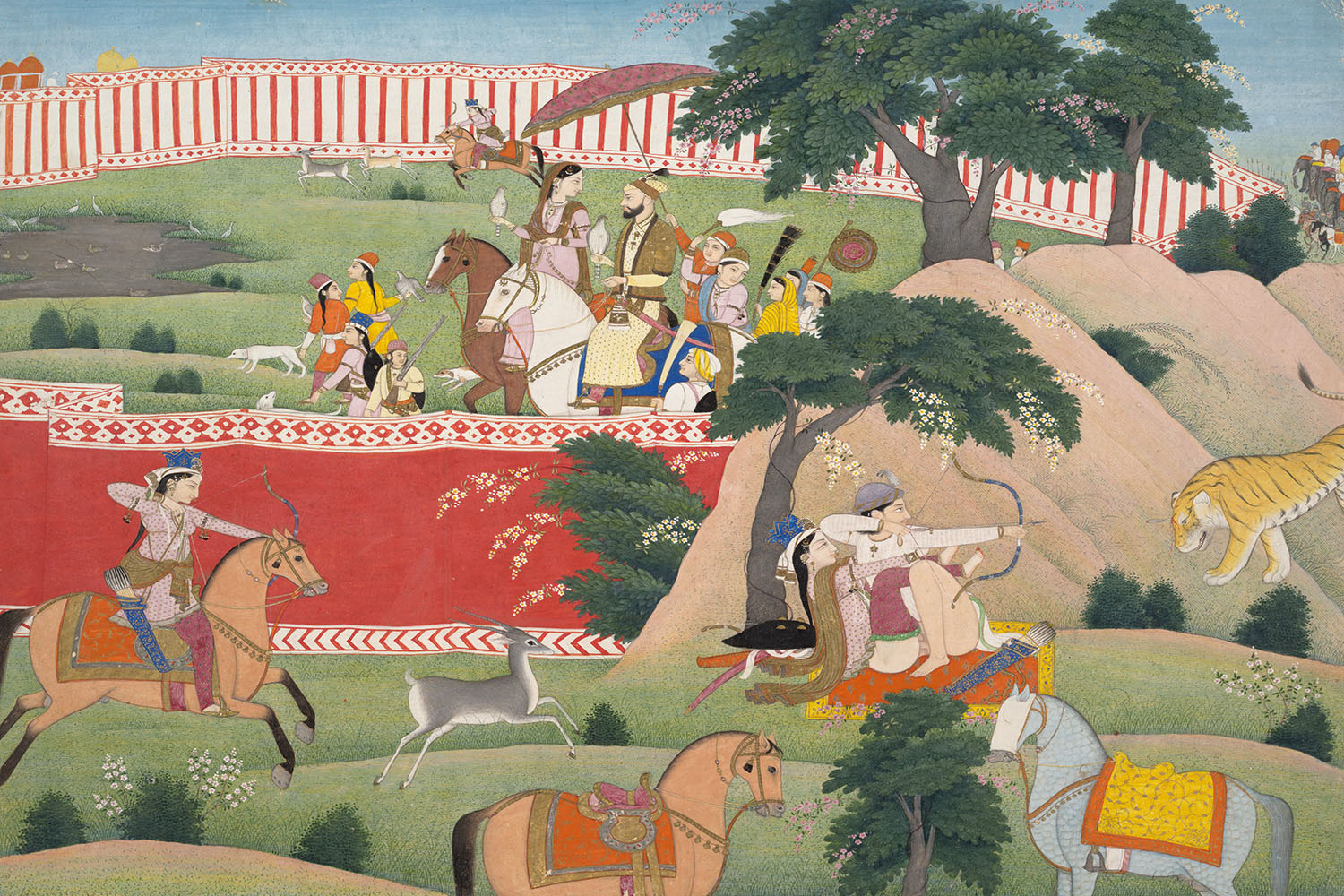ARTICLE
Pahari Manuscript Painting
As a result of the political independence and the remoteness of the Pahari kingdoms, the early Pahari style at Basohli was far removed from the naturalism, restraint and muted colours of Mughal painting, despite the strong influence of the Mughal style in Rajasthan and the Deccan during the same period. Over the course of the next century, however, Nainsukh began to occasionally work for the Rajasthani and Mughal courts and, as a highly influential painter, became responsible for the introduction of Mughal elements into the manuscripts painted in Basohli and surrounding kingdoms. Additional Mughal influences on the Pahari style were brought by the many artisans who fled from the atelier of Mughal emperor Muhammad Shah, following the seige on Delhi by Nader Shah’s forces in 1739. Notable features that distinguish this later style from that of the seventeenth century include a landscape backdrop with a lower horizon line, a lighter colour palette, less ornamentation in the costumes, and a more realistic size difference between human figures and architectural elements. This style, established in the mid to late eighteenth century, is considered to be the fully realised form of Pahari painting.
The Kangra ateliers flourished in the late eighteenth century to the early nineteenth, carrying forward the themes, experiments and Mughal influences of the Basohli paintings, while also adding new elements. This was largely done by artists from the families of Nainsukh and Manaku, under the patronage of the Kangra king Sansar Chand. In addition to the features of the late Pahari style described above, Kangra paintings feature an emphasis on the green, undulating landscape of the Punjab hills as well as a continuous narrative technique practised mainly in Pahari paintings and very rarely in Rajasthani and Mughal ateliers. This composition technique typically involves the strategic arrangement of trees and architectural elements in such a way that a scene is divided into panels. The main participants of the narrative are shown multiple times in the same painting, enacting different parts of the narrative within the divisions created by the surrounding landscape and buildings. Continuous narratives were usually applied to known stories from the Bhagavata Purana, the Gita Govinda and the Ramayana, possibly so that the painting would remain intelligible to the viewer.
Royal patronage for Pahari manuscript painting ceased in the early nineteenth century, prompting many Pahari artisans to take up employment at Sikh or Rajasthani courts. While some minor artists in Kangra continued to practice the art form, the Punjab hills were no longer a cultural centre for most of the nineteenth and twentieth centuries. Today, organisations such as the Kangra Arts Promotion Society (KAPS) and the Kangra Museum of Arts in Dharamshala offer training in the traditional Pahari style of painting, including the use of traditional materials and pigments. These paintings are sold commercially as individual works, although the income from sales and the stipend from these organisations remain a precarious form of livelihood for traditional Pahari artists.
Bibliography
Our website is currently undergoing maintenance and re-design, due to which we have had to take down some of our bibliographies. While these will be re-published shortly, you can request references for specific articles by writing to hellomapacademy@map-india.org.








